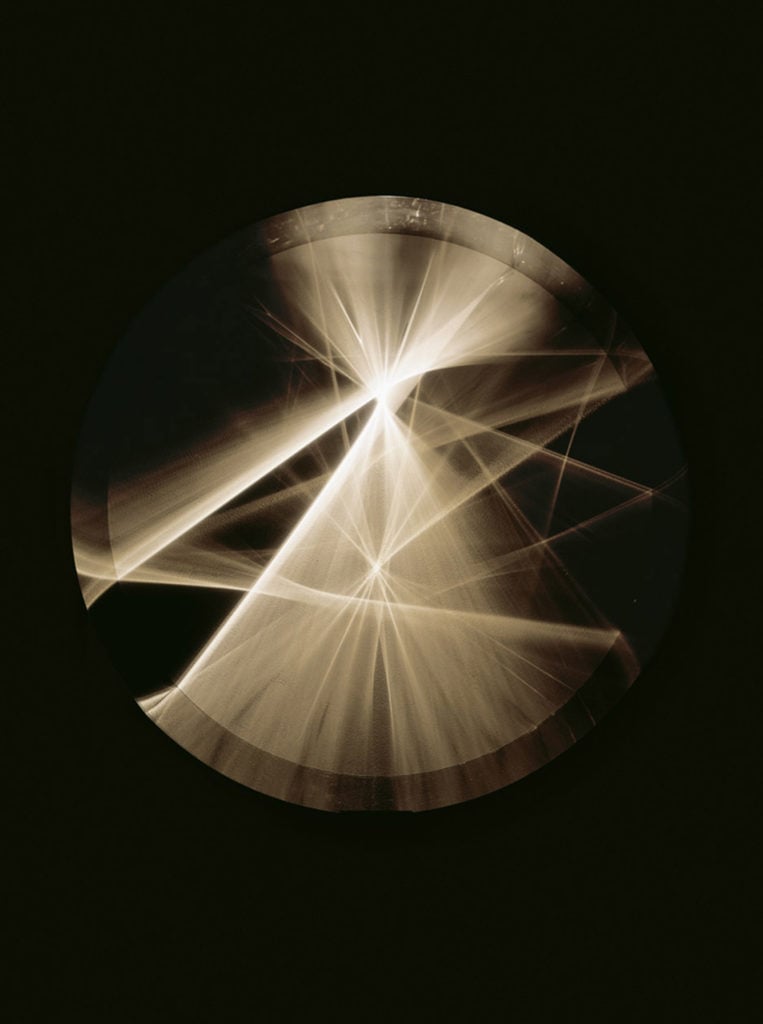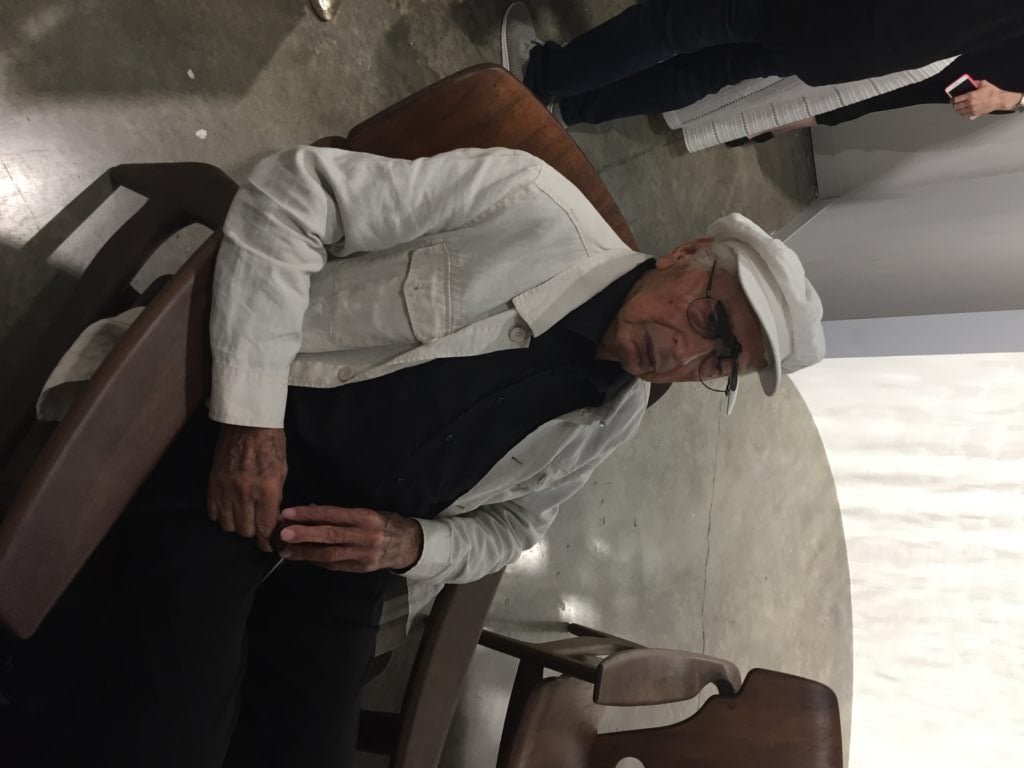Art Fairs
Legendary Artist Julio Le Parc Shines Bright at Art Basel in Miami Beach
We interviewed the artist at the fair.

We interviewed the artist at the fair.

Henri Neuendorf

Julio Le Parc was like a rock star at Art Basel in Miami Beach. While the Argentinian artist reclined in one of the armchairs among his artworks at Brazilian gallery Nara Roesler‘s booth, countless well wishers congratulated the octogenarian and eagerly leaned over to secure a coveted selfie with him. Nara Roesler dedicated its whole booth to Le Parc, making for a display that is one of the fair’s standouts. Our interview (translated from Spanish by director Alexandra Garcia Waldman) was interrupted almost continuously as the artist greeted friends and family, and signed catalogues from his current exhibition at Miami’s Perez Art Museum.

Julio Le Parc at Nara Roesler’s booth at Art Basel Miami Beach. Photo: Henri Neuendorf.
artnet News spoke to him about his art, the Latin American art scene, and the role of art fair’s in the contemporary art world.
HENRI NEUENDORF: Talk about the use of light in your art.
JULIO LE PARC: I didn’t just wake up one day and say “I’m going to work with light.” But I suddenly realized I could solve all the problems I was finding in my work by working with light. So I started incorporating it as a way of researching more aspects that I was already interested in looking into. You can sort of understand that when you see the small, experimental light boxes and when you look at my drawings which are now at the Perez Museum, which are my first studies. You can see how I examined movement and was able to use light to make that into the art.
HN: How has your work developed over time?
JLP: Those studies have infinite possibilities, and with light I was able to turn these into realities that are mutable over time, because I’ve changed the sizes of them over time. For example, my initial preoccupation was with how to bring the artwork to the public. That was very much what I was doing earlier on. And then the work evolved also to incorporate light, and movement, and color, which takes you to these mobiles. So [my motivation is] not just the initial necessity to bring the public to the work.
HN: How would you describe the strength of the Latin American art scene?
JLP: Latin American art has always been important, and maybe even more important than European and American art. This was hidden because of dominance and control. Only now is the strength coming to light.
HN: How have you seen the art world change since the start of your career?
JLP: There are a lot of new possibilities. Still, maybe the system has become more sharpened and strategic, but it’s the same system.
HN: What do you think of art fairs and the format of this marketplace?
JLP: First of all, I like the fact that artists can be seen at these fairs and that they can be put on display. Additionally, you’ve got to realize that these fairs are paid for by artists and their works being sold. I find that dynamic very interesting. There’s an opening to the public.